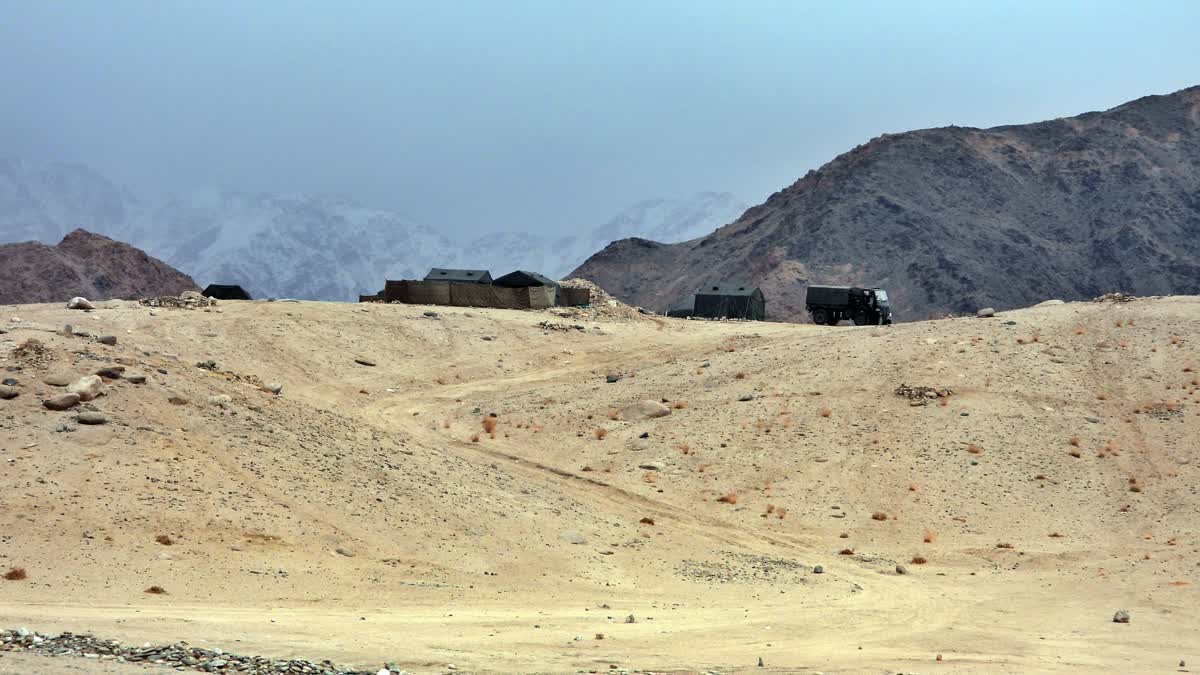New Delhi: Foreign Secretary Vikram Misri’s announcement on Monday that India and China have agreed on border patrolling has sparked speculations about whether the four-year-old border conflict between the two nuclear-armed Asian neighbours in eastern Ladakh has finally come to an end.
“Over the last several weeks, Indian and Chinese diplomatic and military negotiators have been in close contact with each other in a variety of forums,” Misri said at a media briefing here ahead of Prime Minister Narendra Modi’s visit to Russia to attend this year’s BRICS (Brazil, Russia, India, China, South Africa) Summit on October 22-23.
“As a result of these discussions, the agreement has arrived at patrolling arrangements along the Line of Actual Control (LAC) in the India-China border areas, leading to disengagement and a resolution of the issues that had arisen in these areas in 2020,” he said. “We will be taking the next steps on this.”
Though Misri did not specifically mention the names of places along the border where the two sides have agreed to maintain border patrolling, speculations are rife about whether this covers Depsang and Demchok, two critical points of friction in eastern Ladakh. If the agreement indeed covers these two areas, then one can safely assume that it is a major achievement in solving the border conflict.
Where is Depsang and what is its strategic importance?
The Depsang Plains, a high-altitude gravelly plain in the northwest portion of the disputed Aksai Chin region of Kashmir, is divided into Indian and Chinese-administered portions by the LAC. India controls the western portion of the plains as part of Ladakh, while the eastern portion is controlled by China and claimed by India. The Line of Control with Pakistan-administered Gilgit-Baltistan is 80 km west of the Depsang Plains, with the Siachen Glacier in between. Ladakh’s traditional trade route to Central Asia passed through the Depsang Plains, with the Karakoram Pass lying directly to its north.
The Depsang Plains are bounded on the north by the valley of the Chip Chap River and on the west by the Shyok River. On the east, they are bounded by low hills of the Lak Tsung range, which separate them from the basin of the Karakash River. In the south, the Depsang Plains proper end at the Depsang La pass, but in common parlance, the Depsang region is taken to include the mountainous region to the south of it, including the “Depsang Bulge”. The latter is a bulge in theoretical Indian territory, housing the upper course of the Burtsa Nala.
The Depsang Plains cover a wide area and are strategically located close to Daulat Beg Oldi (DBO), India’s northernmost military post near the Karakoram Pass. DBO is significant for India due to its proximity to the China-Pakistan Economic Corridor (CPEC), a major project under Beijing’s Belt and Road Initiative (BRI) and its position at a critical junction that could potentially link China and Pakistan militarily.
Depsang has been a site of military tensions since the 1962 Sino-Indian War. In 2013, the area saw a serious incursion by Chinese troops into Indian territory, resulting in a three-week standoff. This was one of the most serious confrontations at the LAC until the Galwan clashes in 2020.
Depsang’s terrain, being mostly flat and open, offers a strategic advantage for mobilising large-scale military forces, making it a potential battleground in any future conflict. For China, dominating this area would provide a strategic edge to monitor and possibly threaten India’s Darbuk–Shyok–DBO Road, a critical supply route.
Where is Demchok and why is it important strategically?
Demchok, previously called New Demchok, and called Parigas by the Chinese, is a village and military encampment in the Indian-administered Demchok sector, that is disputed between India and China. It is administered as part of the Nyoma tehsil in the Leh district of Ladakh by India, and claimed by China as part of the Tibet Autonomous Region.
Demchok is at an elevation of 4,210 metres (13,810 feet), on a stony plain at the foot of a pyramidal white peak called Demchok Lhari Karpo. A stream called Charding Nullah flows down on the southeast side of Demchok joining the Indus River. The alluvial deposits from the stream form small plots for grazing and farming. Around the corner of the Demchok Lhari Karpo peak is a hot spring near Demchok, the water of which is believed to have medicinal qualities.
Demchok was another area of conflict during the 1962 Sino-Indian War. Since then, both sides have maintained a military presence, though Demchok had been relatively peaceful compared to other parts of the LAC until the late 2000s. Since 2014, tensions in Demchok have flared intermittently, with reports of Chinese incursions into Indian-controlled areas and infrastructure development along the LAC. Chinese civilians, often accompanied by the People’s Liberation Army (PLA), have been reported to enter areas claimed by India to set up tents, triggering local disputes.
Demchok became a renewed point of friction after the 2020 Galwan Valley standoff. China’s forces have allegedly moved into areas previously patrolled by Indian troops. The PLA has reportedly constructed infrastructure close to the disputed areas, leading to concerns about long-term Chinese intentions.
For India, maintaining control over Demchok is critical due to its proximity to the Indus River, which is essential for irrigation and water security in Ladakh and northern India. Any shift in the status quo could disrupt water flow and have severe consequences for local populations.
Now, indeed, if the agreement on border patrolling between India and China in eastern Ladakh includes Depang and Demchok, one should not be surprised if there is a bilateral meeting between Modi and Chinese President Xi Jinping on the sidelines of the BRICS Summit in Kazan, Russia.
Read more: India Once Again Objects to China's Belt and Road Initiative at SCO Meet; Know Why



